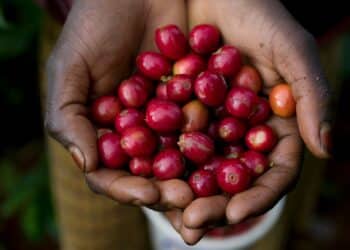Starbucks’ global comparable store sales declined a total of two per cent in the 13-week fiscal third quarter ending 29 June 2025 according to the company’s financial reports, despite a minor increase to its transaction numbers in China.
The two per cent decline in store sales was driven by a two per cent decline in transactions but partially offset by a one per cent increase in average ticket.
A two per cent increase in Chinese comparable store sales was driven by a six per cent increase in comparable transactions but offset by a four per cent decline in average ticket.
During the quarter, Starbucks reduced the price of a range of its non-coffee beverages in China. This is the second consecutive quarter of positive growth for Starbucks in China.
A consolidated net revenue increase of four per cent to US$9.5 billion is a better-than-expected result after several quarters of falling sales, but the company in in the midst of a brand reset it has labelled ‘Back to Starbucks’.
Starbucks CEO Brian Niccol says the positive momentum the company is creating in its worldwide operations is yet to be felt in its finances.
“In Q3 we made good progress and we laid the foundation for a wave of innovation in 2026. Our Back to Starbucks plan is working. It’s grounded in what makes us Starbucks – handcrafted beverages welcoming coffeehouses, and the human connection that brings it all together,” says Niccol.
“While our financial results don’t yet reflect all the progress we’ve made, the signs are clear – we’re gaining momentum. In the US partner engaging is rising, customer connection scores are up, shift completion is at a record high, non-Starbucks Reward customer transactions returned to growth, and more coffeehouses are delivering positive transaction comps.
“This momentum is global. International revenue for the quarter topped US$2 billion for the first time. China comparable sales turned positive, and we’re growing with purpose across Canada, the United Kingdom, Mexico, Türkiye, and beyond.”
In North America, sales declined two per cent due to a three per cent reduction in comparable transactions, as Starbucks continues to overhaul its operations.
Niccol, who became Starbucks CEO in September 2024, says the company is preparing “uplift” its coffeehouse experience in its home market.
“We’re … bringing back seats, warmth, and texture,” he says. “We’re building the coffeehouse of the future with a 30 per cent lower cost to build, a better customer experience, and design to fuel our growth.
“With these foundations in place we’re ready to innovate. In 2026 we’ll launch a protein cold foam – a breakthrough modifier with 15 grams of protein, a reimagined artisanal bake case, and a bold new 1971 dark roast.
“We’ve fixed a lot and we’ve done the hard work on the hard things to build a strong operating foundation. In 2026 we’ll unleash a wave of innovation that fuels growth, elevates customer service, and ensures everyone experiences the very best of Starbucks … we are focused on growing back better and delivering durable, sustainable long-term growth.”
Starbucks also reported the opening of 308 new stores in Q3, ending the period with a total of 41,097 stores – 53 per cent of which are company operated.





